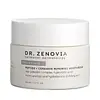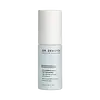What's inside
What's inside
 Key Ingredients
Key Ingredients

 Benefits
Benefits

 Concerns
Concerns

No concerns
 Ingredients Side-by-side
Ingredients Side-by-side

Water
Skin ConditioningCyclopentasiloxane
EmollientSodium PCA
HumectantGlycerin
HumectantCaprylic/Capric Triglyceride
MaskingPolysorbate 60
EmulsifyingCetearyl Alcohol
EmollientYucca Glauca Root Extract
Skin ProtectingBakuchiol
AntimicrobialDimethicone
EmollientCetearyl Glucoside
EmulsifyingPolyacrylamide
C13-14 Isoparaffin
EmollientLaureth-7
EmulsifyingCeramide NP
Skin ConditioningCeramide AP
Skin ConditioningCeramide EOP
Skin ConditioningSodium Hyaluronate
HumectantPhytosphingosine
Skin ConditioningCholesterol
EmollientSodium Lauroyl Lactylate
EmulsifyingCamellia Sinensis Polyphenols
AntioxidantMalus Domestica Fruit Cell Culture Extract
Skin ConditioningGenistein
Skin ConditioningPunica Granatum Sterols
Skin ConditioningCucumis Sativus Fruit Extract
EmollientAloe Barbadensis Leaf Juice
Skin ConditioningSqualane
EmollientCeramide Ns
Skin ConditioningTetrapeptide-21
Skin ConditioningResveratrol
AntioxidantBisabolol
MaskingCaffeine
Skin ConditioningTocopheryl Acetate
AntioxidantLecithin
EmollientGlyceryl Stearate
EmollientPEG-100 Stearate
Dimethicone Crosspolymer
Emulsion StabilisingCarbomer
Emulsion StabilisingXanthan Gum
EmulsifyingPhenoxyethanol
PreservativeSorbic Acid
PreservativeCaprylyl Glycol
EmollientDisodium EDTA
Parfum
MaskingWater, Cyclopentasiloxane, Sodium PCA, Glycerin, Caprylic/Capric Triglyceride, Polysorbate 60, Cetearyl Alcohol, Yucca Glauca Root Extract, Bakuchiol, Dimethicone, Cetearyl Glucoside, Polyacrylamide, C13-14 Isoparaffin, Laureth-7, Ceramide NP, Ceramide AP, Ceramide EOP, Sodium Hyaluronate, Phytosphingosine, Cholesterol, Sodium Lauroyl Lactylate, Camellia Sinensis Polyphenols, Malus Domestica Fruit Cell Culture Extract, Genistein, Punica Granatum Sterols, Cucumis Sativus Fruit Extract, Aloe Barbadensis Leaf Juice, Squalane, Ceramide Ns, Tetrapeptide-21, Resveratrol, Bisabolol, Caffeine, Tocopheryl Acetate, Lecithin, Glyceryl Stearate, PEG-100 Stearate, Dimethicone Crosspolymer, Carbomer, Xanthan Gum, Phenoxyethanol, Sorbic Acid, Caprylyl Glycol, Disodium EDTA, Parfum
Water
Skin ConditioningGlycerin
HumectantSodium PCA
HumectantSodium Hyaluronate
HumectantHydrolyzed Sodium Hyaluronate
Skin ConditioningResveratrol
AntioxidantBakuchiol
AntimicrobialCamellia Sinensis Extract
AntioxidantGenistein
Skin ConditioningPunica Granatum Sterols
Skin ConditioningCucumis Sativus Fruit Extract
EmollientAloe Barbadensis Leaf Juice
Skin ConditioningPalmitoyl Tripeptide-28
Skin ConditioningErgothioneine
AntioxidantGlutathione
Zinc PCA
HumectantCopper PCA
HumectantTocopheryl Acetate
AntioxidantPhenoxyethanol
PreservativeDisodium EDTA
Water, Glycerin, Sodium PCA, Sodium Hyaluronate, Hydrolyzed Sodium Hyaluronate, Resveratrol, Bakuchiol, Camellia Sinensis Extract, Genistein, Punica Granatum Sterols, Cucumis Sativus Fruit Extract, Aloe Barbadensis Leaf Juice, Palmitoyl Tripeptide-28, Ergothioneine, Glutathione, Zinc PCA, Copper PCA, Tocopheryl Acetate, Phenoxyethanol, Disodium EDTA
Ingredients Explained
These ingredients are found in both products.
Ingredients higher up in an ingredient list are typically present in a larger amount.
Aloe Barbadensis Leaf Juice comes from leaves of the aloe plant. Aloe Barbadensis Leaf Juice is best known for helping to soothe sunburns. It is also anti-inflammatory, moisturizing, antiseptic, and can help heal wounds.
Aloe is packed with good stuff including Vitamins A, C, and E. These vitamins are antioxidants, which help fight free-radicals and the damage they may cause. Free-radicals are molecules that may damage your skin cells, such as pollution.
Aloe Barbadensis Leaf Juice also contains sugars. These sugars come in the form of monosaccharides and polysaccharides, folic acid, and choline. These sugars are able to help bind moisture to skin.
It also contains minerals such as calcium, 12 anthraquinones, fatty acids, amino acids, and Vitamin B12.
Learn more about Aloe Barbadensis Leaf JuiceBakuchiol is a plant-derived antioxidant (it's vegan!). It is often called the replacement for retinol although it is not part of the same family.
It has similar effects as retinol: skin smoothing, reducing discoloration, and preventing wrinkles. It does not cause as much irritation as traditional retinoids.
Bakuchiol works by breaking down free radicals and stimulating collagen production in skin.
Combining bakuchiol with retinol will not have adverse side effects. Studies show using them will just boost the benefits. Bakuchiol is also found to help stabilize retinol.
While bakuchiol does not make the skin more sun sensitive, we recommend wearing SPF on a daily basis.
Read more about traditional retinol
Learn more about BakuchiolThis extract comes from cucumber. Cucumbers are mostly made up of water (95%), and the other 5% is composed of: vitamin C, caffeic acid, fatty acids, amino acids, and other minerals.
Cucumbers have anti-inflammatory, barrier repair, and hydrating properties.
They contain shikimate dehydrigenase, an enzyme shown to help reduce inflammation and soothe the skin.
The amino acids found in cucumbers help nourish our skin's natural acid mantle (it's an important part of our skin barrier). This slightly acidic film acts as a barrier to protect us from bacteria, viruses, and other contaminants.
Unless you have an allergy to cucumbers, this is generally a non-irritating ingredient.
Fun fact: Cucumis Sativus is native to South Asia and can now be found on every continent.
Learn more about Cucumis Sativus Fruit ExtractDisodium EDTA plays a role in making products more stable by aiding other preservatives.
It is a chelating agent, meaning it neutralizes metal ions that may be found in a product.
Disodium EDTA is a salt of edetic acid and is found to be safe in cosmetic ingredients.
Learn more about Disodium EDTAWe don't have a description for Genistein yet.
Glycerin is already naturally found in your skin. It helps moisturize and protect your skin.
A study from 2016 found glycerin to be more effective as a humectant than AHAs and hyaluronic acid.
As a humectant, it helps the skin stay hydrated by pulling moisture to your skin. The low molecular weight of glycerin allows it to pull moisture into the deeper layers of your skin.
Hydrated skin improves your skin barrier; Your skin barrier helps protect against irritants and bacteria.
Glycerin has also been found to have antimicrobial and antiviral properties. Due to these properties, glycerin is often used in wound and burn treatments.
In cosmetics, glycerin is usually derived from plants such as soybean or palm. However, it can also be sourced from animals, such as tallow or animal fat.
This ingredient is organic, colorless, odorless, and non-toxic.
Glycerin is the name for this ingredient in American English. British English uses Glycerol/Glycerine.
Learn more about GlycerinPhenoxyethanol is a preservative that has germicide, antimicrobial, and aromatic properties. Studies show that phenoxyethanol can prevent microbial growth. By itself, it has a scent that is similar to that of a rose.
It's often used in formulations along with Caprylyl Glycol to preserve the shelf life of products.
Punica Granatum Sterols isn't fungal acne safe.
Resveratrol is a famous emerging antioxidant. It is a good alternative for sensitive skin types who cannot tolerate retinoids.
This antioxidant is most famous for it's anti-aging benefits. Studies show it combats the signs of aging by:
Besides anti-aging, this ingredient also helps with skin brightening and soothing.
The most effective forms of resveratrol are isobutyrate and butyrate. These have the strongest effect on increasing A1 collagen and reducing inflammation.
A note on it being a retinoid alternative:
Despite it's amazing skin benefits, it is not a replacement for retinoids. However, it is recommended for people with sensitive skin or intolerance to retinoids.
Resveratrol is naturally found in grapes, peanuts, and berries.
Learn more about ResveratrolSodium Hyaluronate is hyaluronic acid's salt form. It is commonly derived from the sodium salt of hyaluronic acid.
Like hyaluronic acid, it is great at holding water and acts as a humectant. This makes it a great skin hydrating ingredient.
Sodium Hyaluronate is naturally occurring in our bodies and is mostly found in eye fluid and joints.
These are some other common types of Hyaluronic Acid:
Learn more about Sodium HyaluronateSodium PCA is the sodium salt of pyroglutamic acid. It is naturally occurring in our skin's natural moisturizing factors where it works to maintain hydration.
The PCA stands for pyrrolidone carboxylic acid, a natural amino acid derivative.
This ingredient has skin conditioning, anti-inflammatory, and humectant properties. Humectants help hydrate your skin by drawing moisture from the air. This helps keep your skin moisturized.
Learn more about Sodium PCATocopheryl Acetate is AKA Vitamin E. It is an antioxidant and protects your skin from free radicals. Free radicals damage the skin by breaking down collagen.
One study found using Tocopheryl Acetate with Vitamin C decreased the number of sunburned cells.
Tocopheryl Acetate is commonly found in both skincare and dietary supplements.
Learn more about Tocopheryl AcetateWater. It's the most common cosmetic ingredient of all. You'll usually see it at the top of ingredient lists, meaning that it makes up the largest part of the product.
So why is it so popular? Water most often acts as a solvent - this means that it helps dissolve other ingredients into the formulation.
You'll also recognize water as that liquid we all need to stay alive. If you see this, drink a glass of water. Stay hydrated!
Learn more about Water